Google Apps Group Connector
Overview
A Google Groups connector is a reading, writing and deleting connector provided by UNIFYBroker/Google Apps.
This connector encapsulates the information that is available through the Google Apps groups API.
Technical Requirements
The Google Groups connector has no additional requirements following that listed connector prerequisites.
Usage
A Google Groups connector encapsulates Groups data which is made available through the Google Apps groups API.
| Reading | Yes |
| Writing | Yes |
| Deleting | Yes |
| Polling | No |
Schema
The Google Apps Groups connector provides three connectors, Default, Settings and Members.
Default Schema Provider
This schema provider makes available the standard fields provided by the groups API.
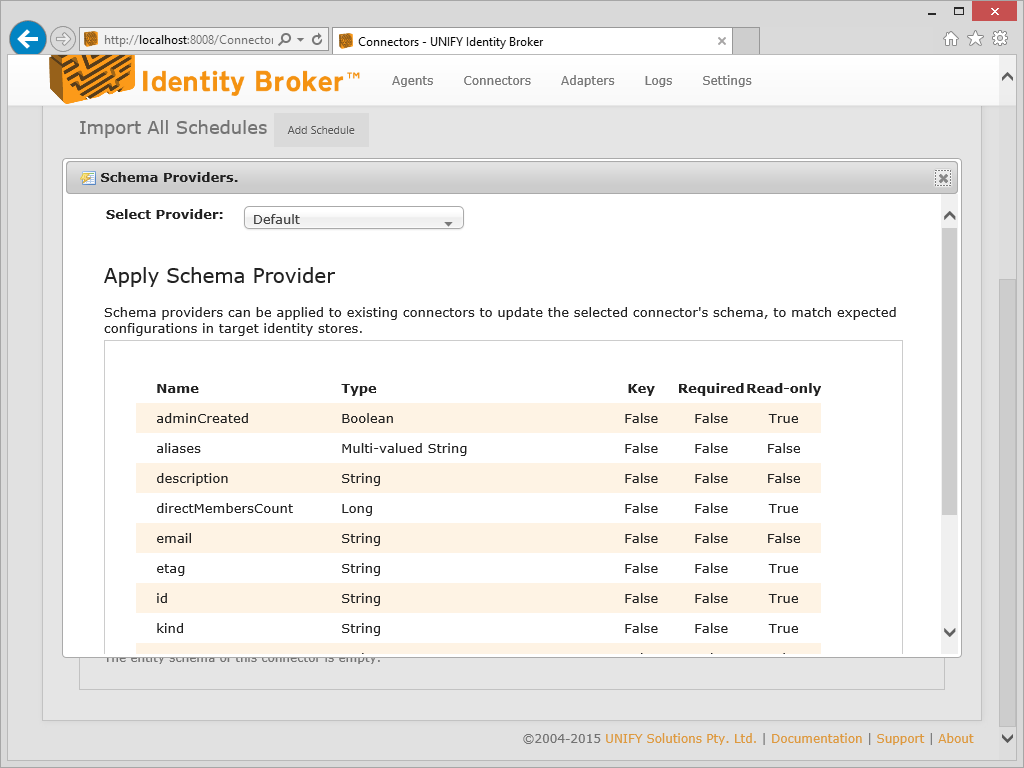
Settings Schema Provider
This schema provider makes available fields containing the settings and controls for the groups.
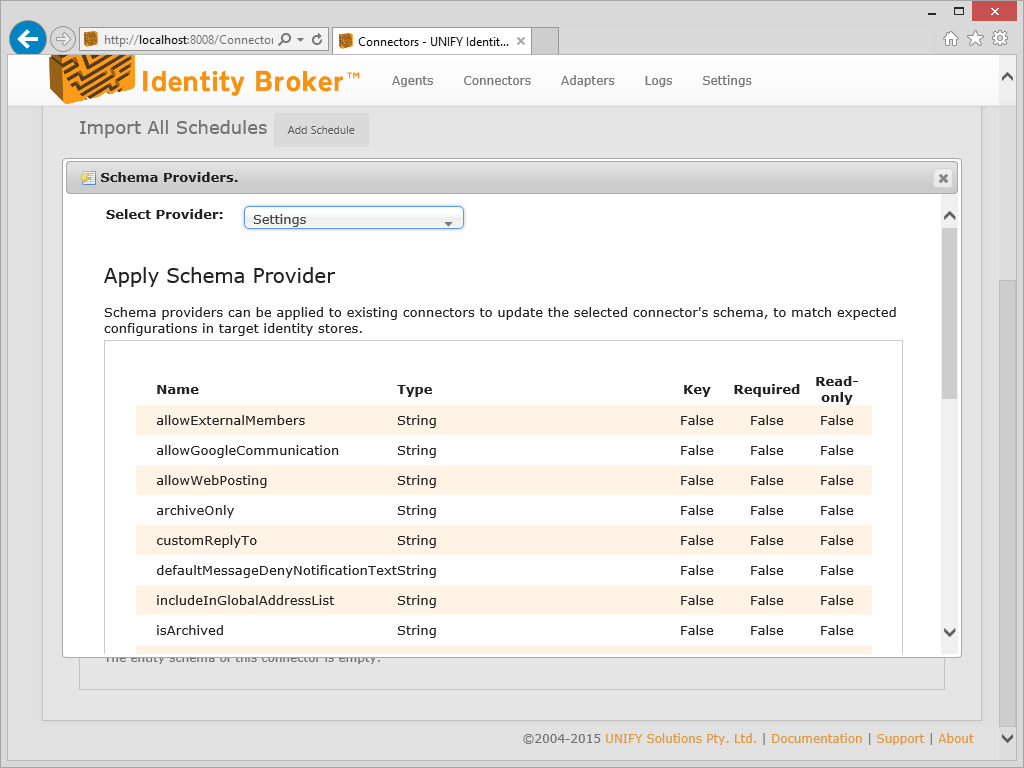
Member Schema Provider
This schema provider makes available multi-value fields containing the Distinguished Name for users or groups which are part or hold a role in the group.
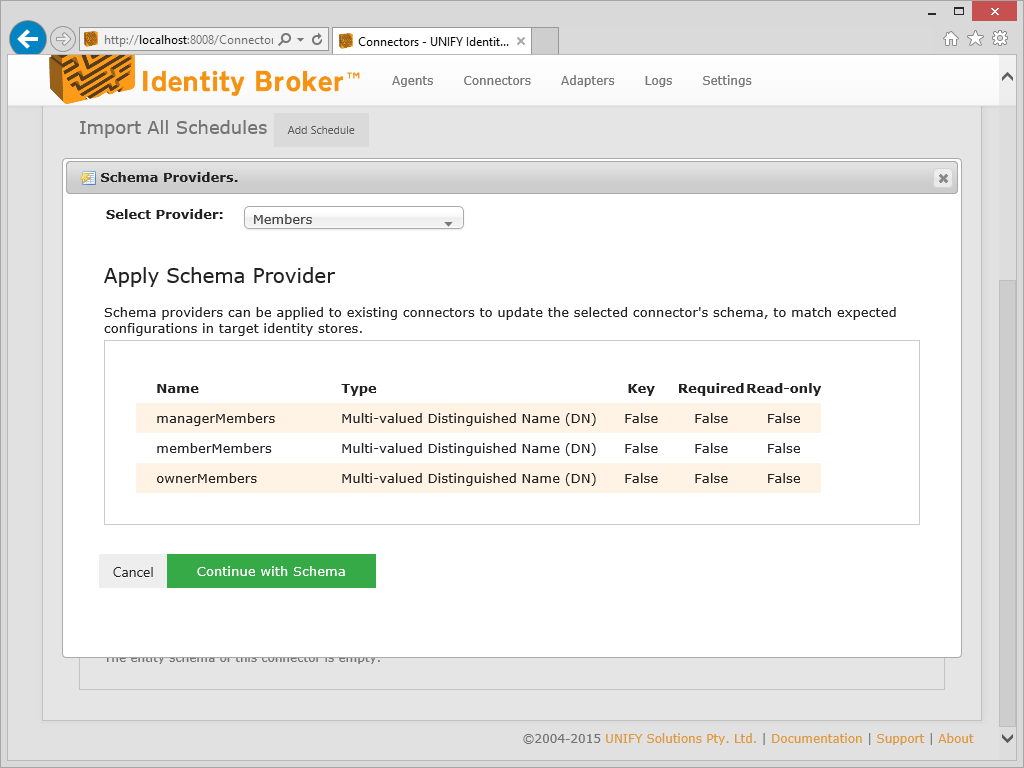
Configuration
Basic Configuration
The basic configuration for a Google Groups connector is as follows:
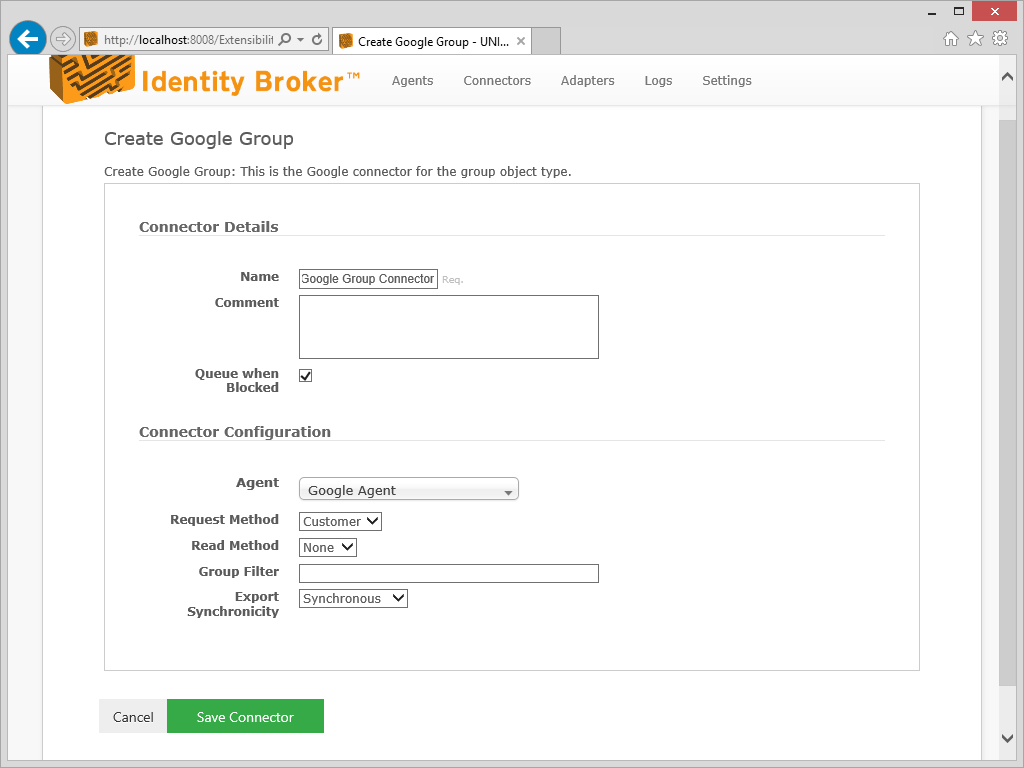
| Name | Description |
|---|---|
| Request Method |
The method used to request items.
|
| Read Method |
The method used to generate a group membership distinguished name from the data stored in Google Apps.
Note: If Read Method is any other setting than None, the settings described in Membership Configuration will also need configuring. |
| Export Synchronicity | Allows export operations to be changed from running synchronously. Synchronous: The default setting, which allows for error messages to be propogated to the identity management platform; Asynchronous: Performs operations asynchronously, logging is still performed, however, the return status will always be a success. For asynchronous mode read the documentation before using. |
Membership Configuration
If Read Method is not set as None, the following configuration are required.
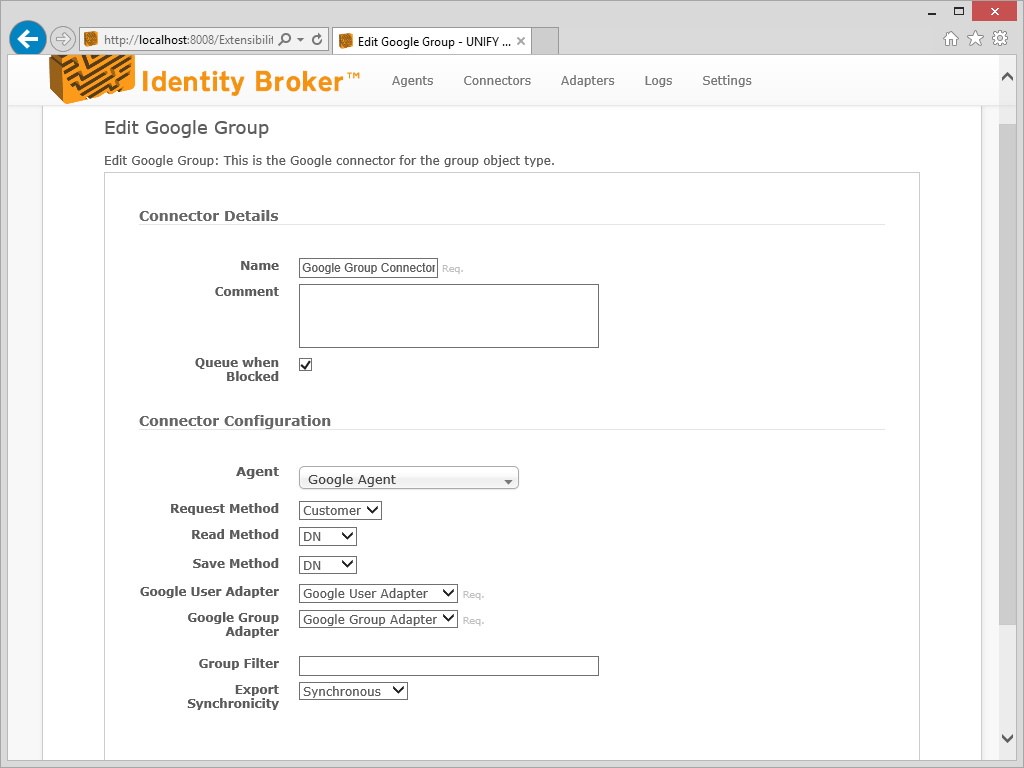
| Name | Description |
|---|---|
| Save Method |
The method used to translate from the exported group memberships back to the Id recognised by Google Apps.
|
| Google User Adapter |
The Adapter that contains Google User information. This is required to read or write group memberships unless both Read Method and Save Method are set as Email. |
| Google Group | The Adapter that contains Google Group information. This is required to read or write group memberships, unless both Read Method and Save Method are set as Email. |
| Group Filter | A comma-separated list of whitelist filters to be applied against the end of the group name. Only group names that end in an item in this list will be included in the resultant set of data. Leave blank to not apply any filter. This filter is not performed server side. |
Google Scopes
The service account requires specific scopes to perform certain functions:
| Operation | Required scope |
|---|---|
| Reading | https://www.googleapis.com/auth/admin.directory.group.readonly
|
| Reading memberships | https://www.googleapis.com/auth/admin.directory.group.member.readonly
|
| Reading settings | https://www.googleapis.com/auth/apps.groups.settings
|
| Writing | https://www.googleapis.com/auth/admin.directory.group
|
| Writing memberships | https://www.googleapis.com/auth/admin.directory.group.member
|
| Writing settings | https://www.googleapis.com/auth/apps.groups.settings |
| Deleting | https://www.googleapis.com/auth/admin.directory.group
|
Customer support service by UserEcho

